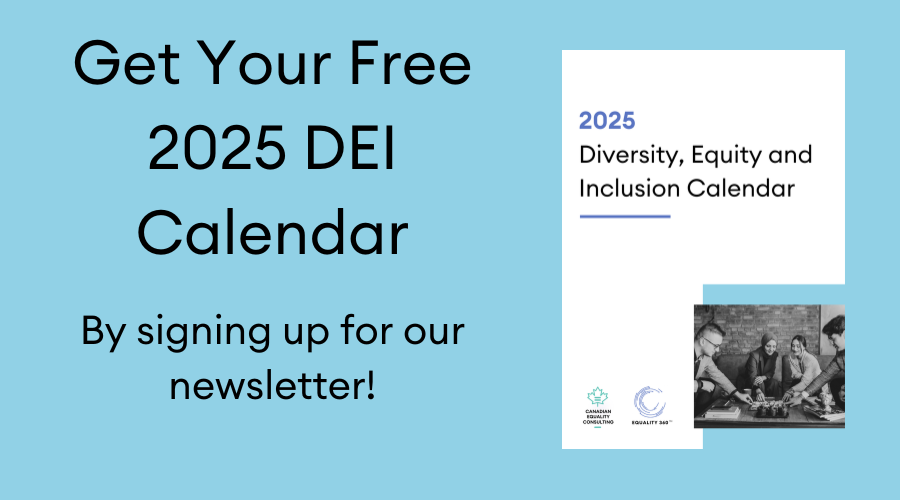
Showing Empathy in the Workplace During World Conflict
2024 began with a series of ongoing world conflicts. And while it might feel hopeless on an individual level to put a stop to conflicts, we can work to do our part. One way is to show solidarity with the affected parties in our workplaces by empathizing with them. However, empathy is a critical soft skill that has long been overlooked as a managerial performance indicator in most organizations.
Empathy is the ability to perceive and relate to other people’s thoughts, experiences, emotions, and situations. In the workplace, it simply means having an in-depth understanding of employees’ perspectives and connecting with them to enhance relations.
As an employer, expressing empathy, particularly amid world conflict signifies that you understand your employees and can offer them physical and mental health support since you know what it means to be in their shoes.
How employers can show empathy in the workplace during times of world conflict
- Showing compassion for the affected
The lines between compassion and empathy are often blurred. While empathy is trying to put yourself in the shoes of the afflicted, compassion means being empathetic to their situations and expressing the desire to act and ease their pain.
- Accommodating Leadership
Adopting empathetic leadership extends beyond staff interactions. It involves having a genuine concern for their emotional well-being, recognizing and validating their achievements, and offering them mental health support through active listening, and considering their opinion.
- Open Communication
Having an open line of communication where employees can easily contact you is essential in fostering empathy. It is necessary for them to feel comfortable when sharing information about their personal or professional lives.
In return show genuine concern. Check-in with them regularly to ensure they aren’t overwhelmed by the workload,and be an active participant in their conversation to help boost their emotional well-being.
- Honesty and Authenticity
Encouraging honesty and authenticity among leaders improves how the employees perceive them. When managers admit to burnout, making errors, or being overwhelmed by workloads, it makes it easy for employees to express themselves without fear of discrimination.
The importance of acknowledging and addressing the impact of global conflicts on employees’ emotional well-being
- It builds trust – Trust is crucial for any relationship to thrive, including work relations. Acknowledging and addressing the significance of global conflicts on employees’ emotional well-being sends a message that you not only hear them but also consider their pleas. By valuing their opinions, and needs you affirm your solidarity with them, and thus ease their minds from the conflicts and the aftermaths.
- It builds resilience – When trust is established, it helps build resilience. Employees will be resilient when they have faith that their organization’s values and will defend them. They become carefree and can focus on their responsibilities thus improving their emotional well-being and creating cohesive workspaces.
- It provides employees a sense of belonging – Acknowledging the existence of world conflict by creating forums where employees can openly speak about their experiences and express their feelings gives them a sense of belonging.
- It boosts their morale – Taking proactive measures by acknowledging and addressing the impacts of global impacts on employees signifies support for their wellbeing. This boosts their morale and helps them remain positive throughout a crisis. Employers can take more proactive measures like
Actions Employers Can Take to Improve Employees’ Well-Being During Global Conflict
- Providing resources for mental health support – Employers can offer counseling or therapy sessions in collaboration with experts to help employees dealing with emotional distress. They can also avail reading materials, and set aside days to speak on mental health-related issues.
- Offering flexible work arrangements – Employees can adopt hybrid or remote working arrangements for employees dealing with loss or family-related challenges to help them elevate their stress levels.
- Adapting flexible leave policies – Organizations can alter their leave policies to adopt more friendly ones like unlimited PTO to give employees affected by global conflict ample time to grieve or unwind.
- Recognizing and appreciating the employees – Giving recognition to employees affected by global conflict may go a long way in uplifting their spirits and boosting their morale. It can be as simple as mentioning them during team meetings or appreciating them for their resilience.
- Organizing Diversity and Inclusivity Training – Organizing diversity and inclusion training programs where employees can learn the cultural and political differences of their colleagues can be beneficial in fostering inclusive workplaces.
Offer Culturally Sensitive and Diverse Supports
In a fast-paced world where workplaces are embracing people from different backgrounds, the ability to effectively communicate and interact with ease is becoming increasingly essential.
But besides communicating, understanding the experiences, and perspectives of multicultural diversity in fostering cordial relations in the workplace is attracting attention. So, how is it important?
- Attracts a broader talent pool – Diversity has recently become a critical factor for job seekers who are more receptive to accepting offers from organizations that value diversity. Encouraging diversity opens you up to a pool of global talent from which you can pick the best.
- Helps to retain top talent – In today’s world, having a good workplace culture that offers a great employee experience is the quickest way to retain talent. This can be achieved by offering diverse supports, being mindful of employee mental health and emotional well-being, and having flexible work schedules.
How providing employees with opportunities to experience different cultures and diverse locations can enhance their understanding and appreciation for diversity
- Actively engage in diversity efforts – Employees can participate in diversity activities in the organization by being a diversity mentor, taking up volunteer roles, or serving in diversity-related committees to guide and oversee diversity projects.
- Participate in employee surveys – Periodically participate in employee pulse surveys by initiating or responding to them. If you are a respondent, it is important to be authentic and honest, and consistently express concerns that are instrumental in championing diversity issues.
- Educate colleagues in the organization – Having an inclusive workplace culture is not a one-time thing, but a gradual process. It takes time, patience, and consistency to maintain it. Being at the helm of offering diversity education by creating diversity programs or coursework is instrumental in appreciating diversity.
Foster an Inclusive Culture to Share Without Pressure
Developing an inclusive culture is easy, but retaining it is not as easy as crossing your tasks from your work schedule. This is how you maintain it to share without pressure;
- Provide diversity and inclusivity training
Is John from accounting struggling with pronouns? Well, that means it’s time for inclusivity training. Diversity and Inclusion training helps to address societal bias and prejudice and educate employees on how to embrace their differences and perspectives for a common goal.
- Have a diverse holiday calendar
While it may be impossible to recognize all religious and cultural calendar holidays, it is important to acknowledge that some employees, particularly the minority groups observe them. Thus, you can offer accommodations such as allowing the employees to take time off to celebrate, participate in their cultural practices, or have relevant decorations.
- Use Inclusive Language
Using inclusive language in the organization is one of the fundamental practices in fostering inclusive workplaces. Avoid discriminatory and offensive phrases and consult in case you are uncertain how to address your colleagues.
- Create Safe Spaces
Creating safe spaces comes in different shapes and sizes. On one hand, it involves creating a conducive environment where employees can interact. On the other hand, it entails establishing amenities in the workplace that offer comfort to everyone, such as those with disabilities.
Promote Constructive Conversation and Mutual Understanding
Constructive conversation is a communication approach that involves actively listening, respecting diverse perspectives, and seeking common ground to achieve a win-win goal. This type of communication is more prevalent among people with different and diverse views and aims to foster a collaborative environment where meaningful engagements can be realized.
On the other hand, mutual understanding is a communication approach that involves two or more individuals who share similar sentiments or hold the same opinions, perspectives, and insights on a subject matter. Unlike constructive conversation, mutual understanding seeks to achieve a common goal attained from engaging in effective communication, and cooperation.
How To Promote Constructive Conversation and Mutual Understanding in the Workplace.
- Encourage The Use of Respectful Language
Being respectful in your communication can significantly influence the direction of your dialogue. Respectful communication entails using courteous words like ‘please’, ‘sorry’, and ‘excuse me.’ Further, it involves showing empathy and expressing feelings, affirmations, and appreciation for things.
- Establishing The Objective
Before participating in any dialogue, you must start by defining the purpose. The purpose is to provide concrete direction for the conversation without unnecessary deviations.
- Listening Actively
Encouraging active listening promotes workplace inclusion as it provides employees with a safe avenue to tell their stories and share experiences without fear of judgment. Being in tune with constructive dialogue, active learning utilizes verbal and nonverbal cues such as nodding your head, maintaining eye contact, leaning forward, and smiling.
Using any cue signifies your interest in the subject matter and shows empathy. Seeking clarification and giving feedback is also encouraged.

